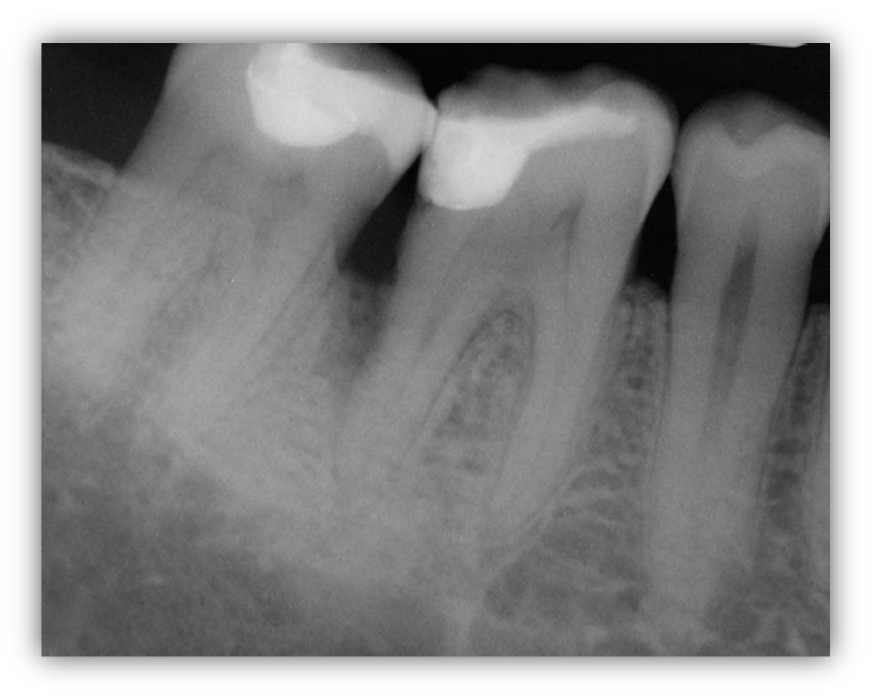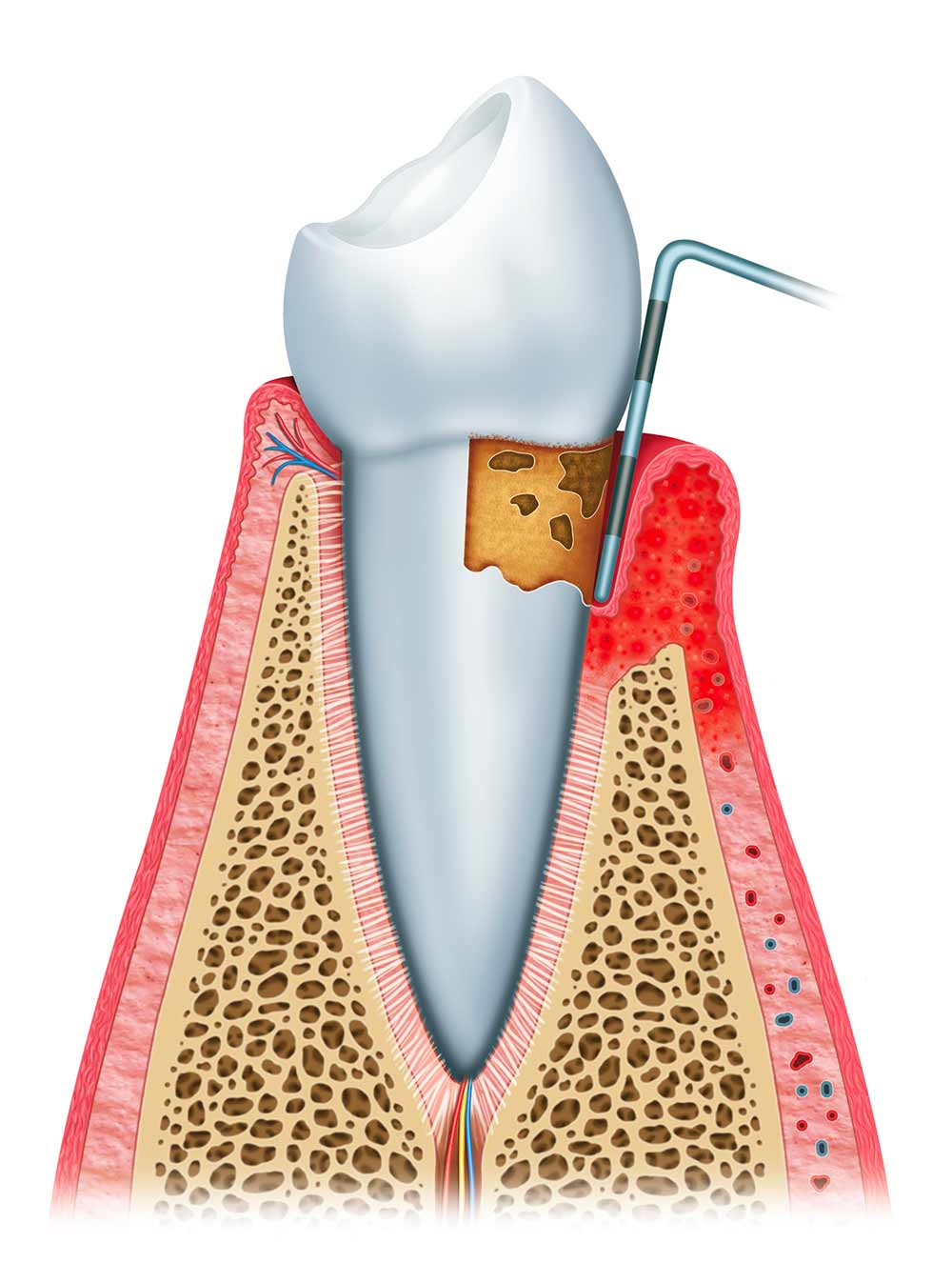TREATMENT OF PERIODONTITIS
1 – Control of risk factors
- Establish good oral hygiene practices.
- Smoking cessation.
- Control any contributing factors such as grinding teeth or other para-functional habits.
- Make sure that all systemic diseases present are well controlled.
Without control of risk factors, we cannot expect a good response to treatment.
2 – Root planing (deep cleaning)
- Non-invasive procedure.
- Consists of thorough sub-gingival cleaning of the surfaces of the roots of teeth in order to remove all the plaque and calculus that cover them.
- Performed under local anesthesia in 2 to 4 sessions.
- Patients experience little discomfort following this procedure, apart from some sensitivity to cold.
Bone fill following root planing
Before

After

Before

After

3 – Re-evaluation
- Between 8 to 12 weeks following the root planing procedure, an appointment is planned to assess the response to treatment, perform a good cleaning and determine the appropriate frequency of maintenance care to minimize recurrences.
4 – Maintenance phase
- Long-term follow-up by your periodontist and good oral hygiene habits are essential for the maintenance of your oral health.
- These appointments consist of an evaluation of the state of your gums and a thorough cleaning adapted to your specific needs, alternating between our office and that of your dentist.
- This preventive approach allows us to detect any reactivation of periodontal disease and if needed to intervene quickly with simple measures.
- A maintenance appointment consists of :
1. Updating your medical and dental history.
2. Assessing your periodontal health.
3. Removing all plaque and calculus build-up both above and below the gum and in hard to reach areas.
4. Assessing your ability to remove plaque and, if necessary, revising oral hygiene techniques.
In certain situations, we need to resort to surgical approaches in order to achieve periodontal health.
Pocket reduction surgery
- Treatment of choice in more severe cases or when deep residual pockets persist following root planing.
- Allows better access to reach calculus which is lodged far under the gum.
- Provides access to correct bone defects caused by periodontal disease and to reposition the gum closer to the actual bone level in order to reduce pockets depth and create an environment that will be easier to clean and maintain.
- Following this procedure, the teeth will temporarily become more sensitive to cold and heat.
Guided tissue regeneration
- In certain situations, you can regenerate the bone that has been destroyed by periodontal disease. To achieve this, bone grafts or proteins having the capacity to stimulate bone formation can be used.
Before

After

Before

After




















